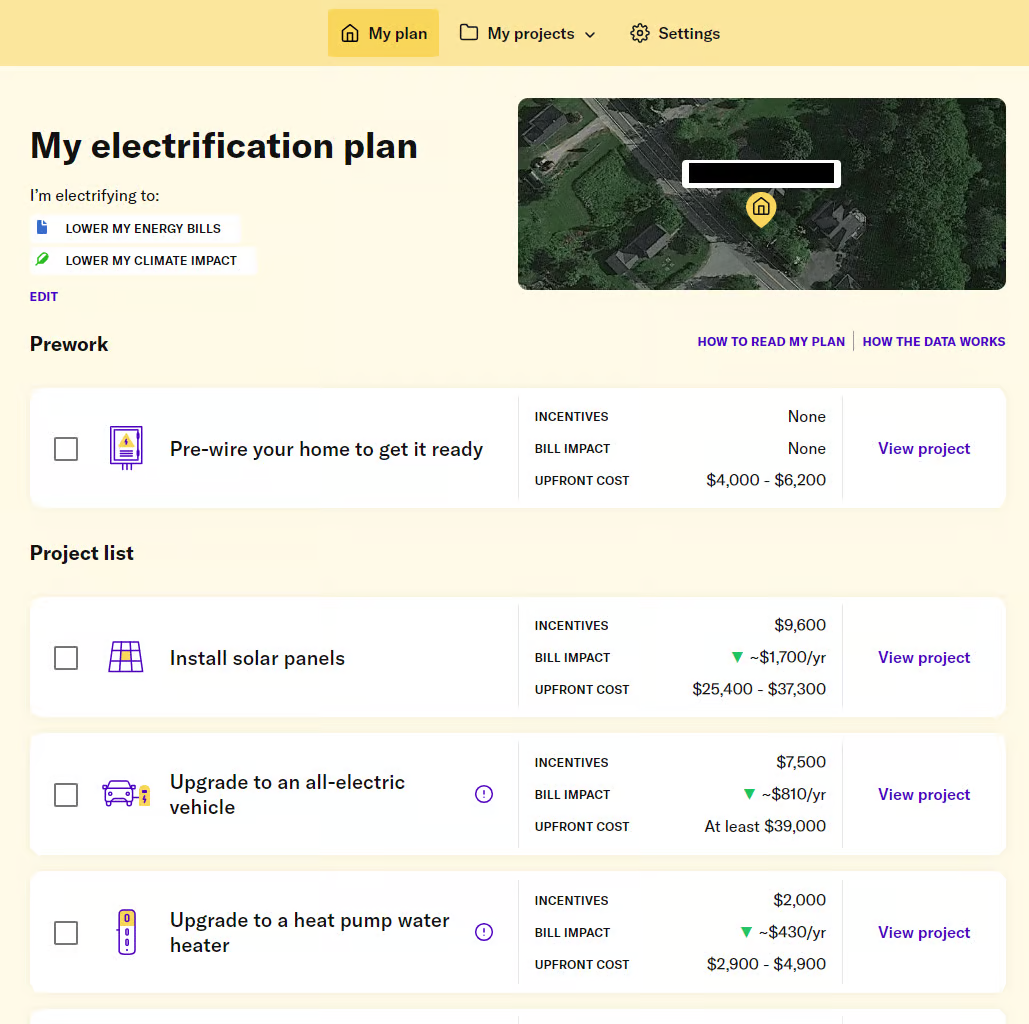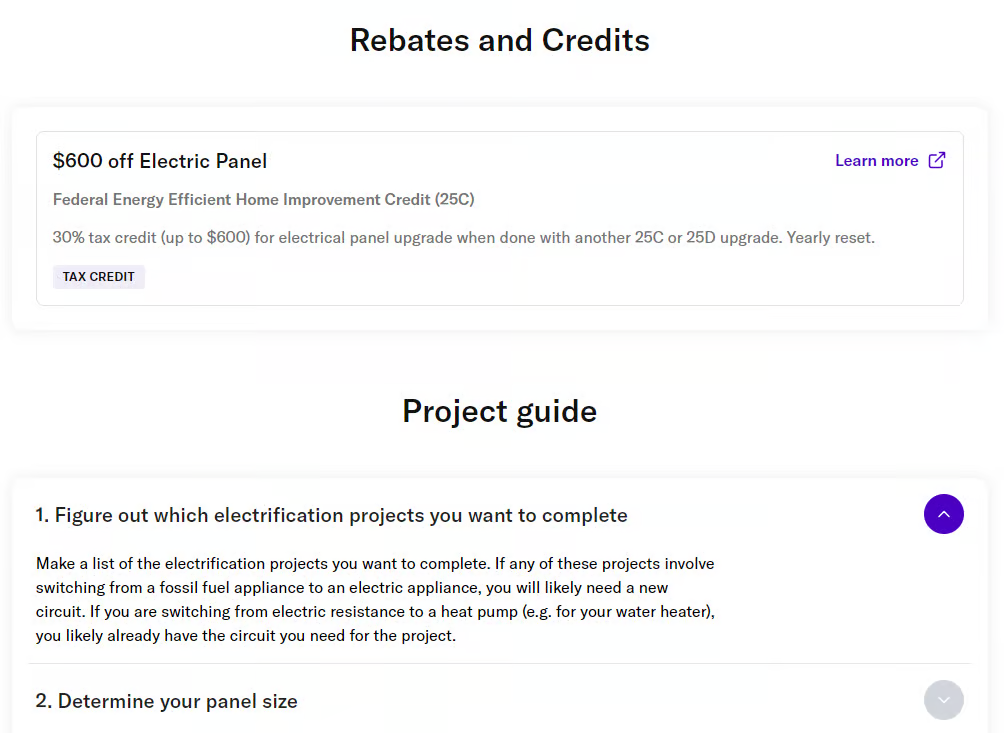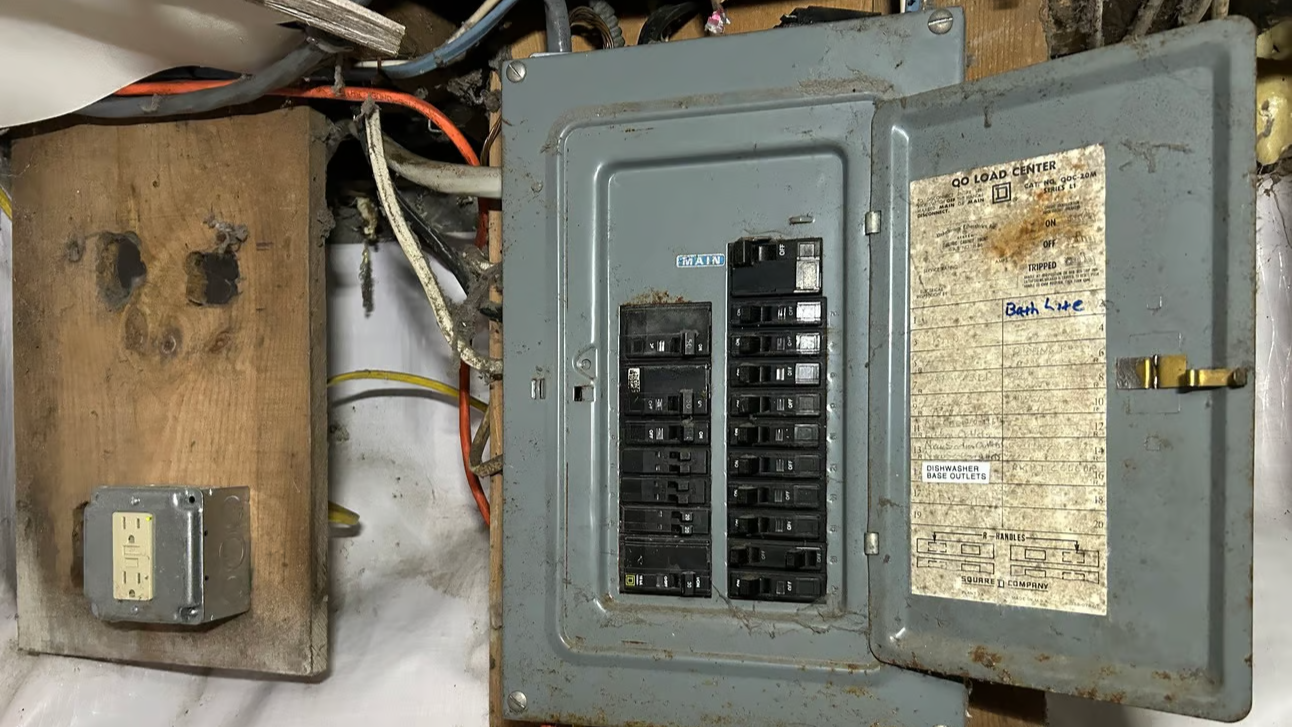Planning all the changes and upgrades needed to transition your home off fossil fuels can quickly turn into a circular problem.
In my home, for instance, we know we want to switch from oil to heat pumps for space heating and cooling, and upgrade from electric resistance to yet another heat pump for hot water.
We might need to upgrade our electrical panel before we can install these and other new features. We also know we definitely need new insulation in our basement and attic, which affects all of the above.
But first we might need some mold removed in the basement, and the mold might be behind the existing insulation… on and on. Each step seems to have others as its prerequisites, and each qualifies for different government incentives that combine and stack in complex ways.
What do we do first, if we want to maximize efficiency and cost savings? Even after getting through a sort of “step zero” with our energy audit last fall, and even with an abundance of knowledge and resources, it’s been a struggle to figure it out.
I offered some tips and pledged to get started a few weeks ago — but nailing down this order of operations has proven challenging.
This week, I tried a newly released tool: the Personal Electrification Planner from the nonprofit advocacy group Rewiring America. It’s currently geared toward homeowners, but the group says similar tools are in the works for renters and people in mobile homes.
You make an account, put in your address and fine-tune a few other specifications, and it spits out a project list like this:

I was excited to see this emphasis on “pre-wiring” before all other steps toward electrification. We haven’t been sure if or when we’ll need to do this to support other upgrades that will use a lot of power (e.g. heat pumps or an EV charger).
In this tool, when you click through to view a project’s details, you get cost and benefit estimates as well as a list of potential rebates and credits available at your income level.
Then the tool walks you through specific steps, explaining how to assess your electrical panel’s size and other considerations.

“Our goal was to develop a tool that empowers homeowners to make smarter choices and gives people the data they need, like personalized upfront cost, annual bill savings, and available federal incentives, to better understand what the electrification journey could look like for their home, specifically,” said Rewiring’s head of product, Tom Mercer, in a statement.
“In the coming months, the goal is to make the tool more accessible, actionable, and even more personalized by providing additional language support, matching folks with local contractors and incentive programs, and refining our savings and cost numbers,” he said.
By comparing this tool with our energy auditor’s detailed, Maine-centric recommendations, I was finally able to put a list of projects into a potential order.
I made a spreadsheet so I could move projects up and down and into groups, until I felt like I was getting clarity rather than confusing myself more:

And then I finally made that dreaded first call to a contractor — an insulation installer, who will button up our basement and attic before we tackle heat pumps.
This will help us ensure we’re “right-sizing” all our future systems to our home’s ideal needs.







